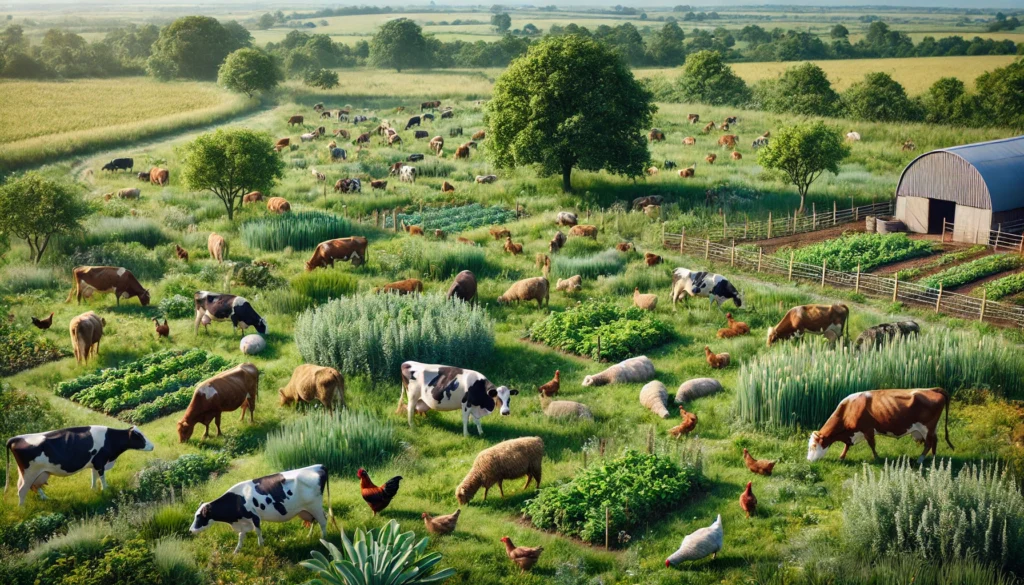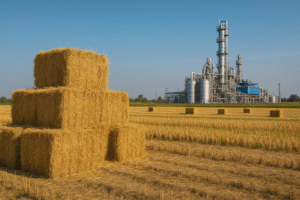Did you know that regenerative agriculture can help restore the Earth’s health while improving farm productivity? That’s right! It’s a transformative approach to farming that not only enriches the soil but also helps tackle climate change.
In today’s fast-paced world, agriculture is often associated with depletion—depletion of nutrients, water, and land resources. But regenerative agriculture offers a different story, one of healing and restoration. This method moves away from traditional agricultural practices that can be harsh on the environment and embraces practices that work in harmony with nature. Let’s dive into the world of regenerative agriculture and see how it’s helping us revive our lands and restore the health of our planet.
What is Regenerative Agriculture?
At its core, regenerative agriculture is about giving back to the soil. Unlike conventional farming, which can strip the land of nutrients and cause erosion, regenerative agriculture emphasizes soil health, biodiversity, and sustainable land use. By using practices that mimic nature, farmers can create a system that’s resilient, productive, and beneficial to the environment.
This approach to farming isn’t just about reducing harm; it’s about actively improving the ecosystem. Techniques like cover cropping, crop rotation, reduced tillage, and integrating livestock contribute to a healthier and more balanced farming system. Imagine a farm where the soil becomes richer each year, water use becomes more efficient, and the crops become more resilient to extreme weather. That’s the potential of regenerative agriculture.
The Key Principles of Regenerative Agriculture
Regenerative agriculture revolves around some core principles. Let’s break them down to understand how they contribute to land restoration and improved productivity:
Soil Health Comes First
Healthy soil is foundational in regenerative agriculture. Instead of depleting the land with synthetic fertilizers, this approach promotes the use of natural compost, cover crops, and organic matter. Healthy soil acts like a sponge, retaining moisture and nutrients and reducing the need for irrigation and external fertilizers.

Diversity in Crops
Unlike monocropping, which grows the same crop year after year, regenerative practices encourage diversity. Crop rotation, intercropping, and cover cropping are used to replenish nutrients and improve soil health. This biodiversity supports healthier soils and can break pest cycles, reducing the need for pesticides.
Minimal Disturbance
Regenerative agriculture minimizes soil disturbance. Techniques like no-till farming or reduced tillage help preserve the structure of the soil. This allows soil organisms to thrive, maintaining a balance that supports better plant growth and healthier crops.
Animal Integration
Integrating livestock with crop farming is another vital aspect. Grazing animals can naturally fertilize fields, break up soil, and control weeds. Holistic planned grazing, a practice championed by regenerative agriculture, ensures animals move in a way that doesn’t degrade the land, instead rejuvenating it over time.
Water Management
Through practices like rainwater harvesting, drip irrigation, and maintaining soil cover, regenerative farming enhances water retention in the soil. This helps farms become more resilient during droughts and reduces water waste—a huge win, especially in water-scarce areas.
Case Studies: Real-World Success Stories in Regenerative Agriculture
Kiss the Ground
Kiss the Ground, a non-profit organization educates farmers on regenerative practices. Their work with farmers across the U.S. has shown how regenerative farming can increase yields, restore biodiversity, and capture carbon in the soil. This organization’s impact demonstrates how regenerative agriculture can play a role in reducing the greenhouse gases that drive climate change.
The Savory Institute
The Savory Institute, a global leader in promoting regenerative agriculture, trains farmers worldwide on holistic management practices, particularly in integrating livestock with crops. One of their major successes is in Africa, where they have turned dry, desert-like lands into lush, productive grasslands, proving the potential of these methods even in arid climates.
Applewood Permaculture Farm
A small farm in the United Kingdom, Applewood Farm uses regenerative practices to produce high-quality, organic vegetables and fruits. Through crop rotation, natural fertilizers, and biodiversity efforts, they’ve created a thriving farm that requires fewer resources and produces less waste.
Benefits of Regenerative Agriculture for Farmers and the Planet
Regenerative agriculture benefits more than just the land. It has a positive ripple effect on farmers, communities, and the planet as a whole. Here’s how:
Economic Resilience for Farmers
With less reliance on costly inputs like synthetic fertilizers and pesticides, regenerative agriculture reduces farm operation costs. Healthier soil also means more resilient crops, which can withstand pests and extreme weather conditions better, ultimately leading to higher yields and financial stability for farmers.
Enhanced Biodiversity
By encouraging a diverse ecosystem, regenerative farms attract pollinators, beneficial insects, and wildlife, creating a balanced environment. This approach can lessen the reliance on chemical pest control, benefiting both the farm and the surrounding ecosystem.
Climate Mitigation
Regenerative agriculture can play a crucial role in combating climate change. Through practices that increase soil organic matter, farms can sequester large amounts of carbon dioxide (CO₂) from the atmosphere. Healthier soil also retains water better, reducing the likelihood of drought-related crop failures.
Healthier Food for Everyone
Regenerative agriculture promotes natural farming practices, which often lead to produce with higher nutritional value and lower pesticide residue. This is beneficial for consumers looking for healthier food options.
Why Now? The Urgency of Regenerative Agriculture
The global challenges we face, including climate change, soil erosion, and food insecurity, demand urgent action. Our conventional farming methods are simply not sustainable in the long run. Regenerative agriculture presents a viable solution that aligns with both ecological health and human needs. Farmers, scientists, and advocates worldwide are rallying to make this change happen. It’s not just about preserving what’s left; it’s about creating an agricultural system that can sustain and even improve the land.
Conclusion: A Future Rooted in Regeneration
As we’ve seen, regenerative agriculture offers a path forward for farmers and our planet. By investing in soil health, encouraging biodiversity, and integrating nature-inspired practices, regenerative agriculture can transform our lands. It’s a hopeful and practical approach, one that empowers farmers to work alongside nature instead of against it.
So, next time you’re at the farmer’s market, look for products from farms that practice regenerative methods. Every small choice adds up, and supporting regenerative agriculture can help restore our lands and ensure a healthier planet for future generations.
Author’s Note
Exploring regenerative agriculture has been a journey of discovering just how closely our health and the Earth’s health are intertwined. I hope this blog inspires you to think more deeply about the origins of our food and the incredible possibilities regenerative agriculture holds for our future.
G.C., Ecosociosphere contributor.
References and Further Reading
- Kiss the Ground
- The Savory Institute
- The Benefits of Regenerative Landscapes. https://johnfrenchlandscapes.com.au/the-benefits-of-regenerative-landscapes/
- Discover the Top 6 Benefits of Regenerative Farming. https://sonicnaturalfarming.com.au/sustainable-agriculture-australia/top-5-benefits-of-regenerative-agriculture/




